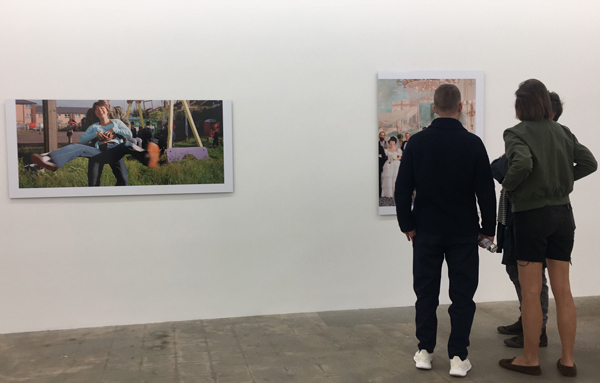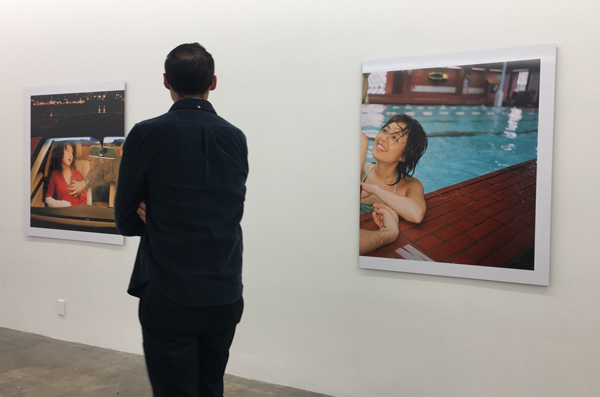Last Saturday night presented a plethora of enticing openings to attend, but there was a unanimous response to check out Nikki S. Lee’s opening for her solo show “Parts and Scenes” at Various Small Fires. Lee’s works on exhibit were just that—parts and scenes, snippets of a whole photograph, allowing for an even more enticing story than the snapshot in its entirety. As we turned the corner into the unassumingly bustling gallery, we were meet by Lee’s large-scale printed photographs—each depicting intimate moments captured in bright cinematic colors and loud-and-clear compositions for us to ponder.

In each photo, only the woman existed in full view while the man remained cropped, leaving it to us to conjure up the second partner. The crowd mingled yet the tone was one of intimate observation as viewers studied the half of each couple portrayed. Immersed in Lee’s alluring prints, I found myself questioning the severed counterpart in the relationship. Exclusion of this information allowed for endless possibilities and I began to impose my own assumptions. As I walked through the show, I remembered one of my favorite quotes from John Berger’s Ways of Seeing, “A man’s presence suggests what he is capable of doing to you or for you. By contrast, a woman’s presence expresses her own attitude to herself, and defines what can and cannot be done to her.” Who were these protagonist women and how did they individually relate to their male companions? I couldn’t help but to identify with the women in each scenario. Whether they were portrayed as taking a bite of a Popsicle, giving birth to a child or grimacing in annoyance to an unwanted grope, I interpreted their joys, struggles and pain as my own.

I approached the delightful artist who explained that by cutting out half of the relationship, she wanted the viewer to focus on what remains just beyond the photo’s severed border. The adoring audience seemed to have a similar sentiment of engaged captivation to Lee’s images, which in a sense, allowed for a “choose your own adventure” or “fabricate your own assumptions.”

Around the corner in a separate room of the gallery, a projected video of Lee’s piece, Scenes, played. The video depicted couples, consisting of Lee with anonymous men, who embraced as we observed their interactions. Each shot was framed in such a way that although the footage was projected in front of us, we, the viewer, were left with feelings of objectification. In one sense, we were invited to watch; yet in another, one played the role of a “Peeping Tom.” Lee’s show challenged and entertained with both humor and satire; giving us a peek into the world of her subjects. And making us question our own co-dependence and existence with another.
Photos by Avery Wheless


